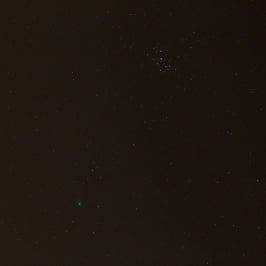- 32,000

- Buckwheat City
- Dennisch

As the picture says. Should be visible with binoculars. And no clouds of course. Which there are plenty of here.
Found it with my scope.

And no way in hell that anyone within a city or just outside would be able to spot it with the naked eye. My finderscope could barely make it visible.
Last edited:













